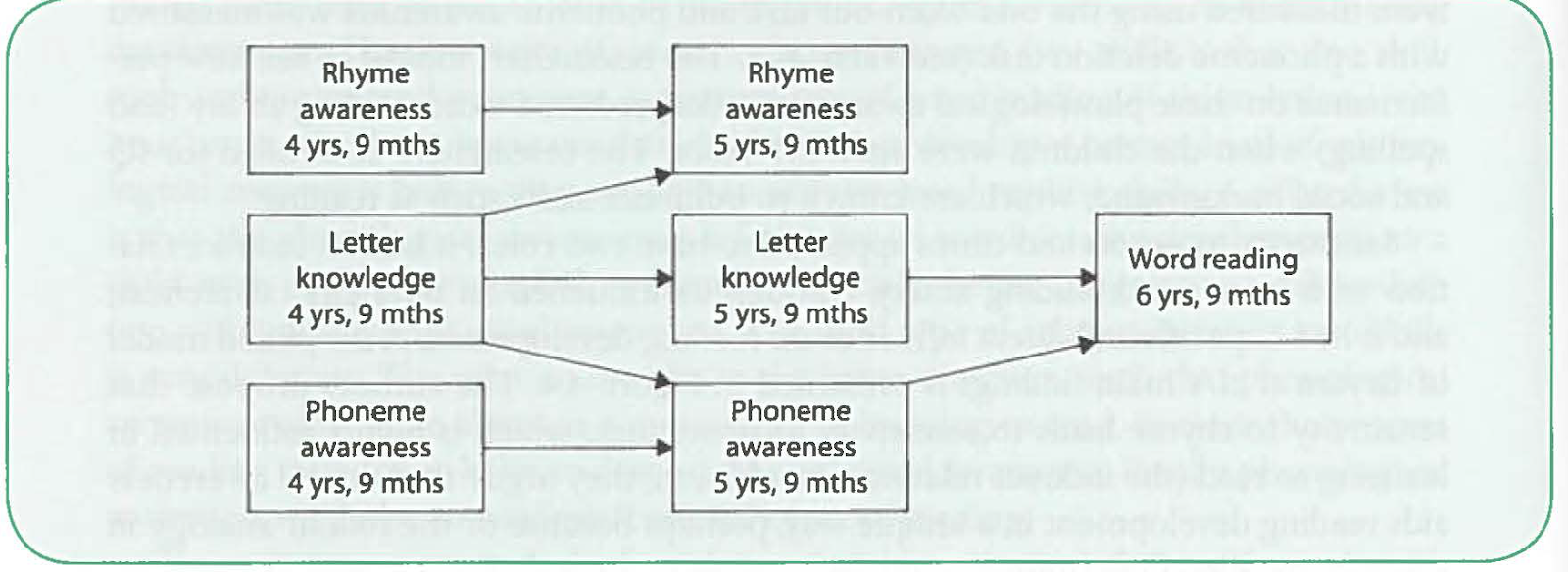Early Readers
I copied this from my other webpage.
I have started to read a lot to support students that are early readers. One thing that I have learned is that exposing students to a variety of texts and strategies supports literacy development. Very important factors in supporting early readers are learning how students learn to read words.
Information from:
Cain, K. (2010). Learning to read words. In K. Cain, Reading Development & Difficulties (Ch. 4, pp. 67-94). Toronto: Wiley.
Sight word
When a reader sees a familiar word on a page or a computer screen, a word that they have read several times previously, their memory for that word is activated.
Phonological
When readers see an unfamiliar word, they can try to read it by sounding out the individual letters and blending them.
Analogy
To read by analogy, readers use information from similarly spelled words that they know in order to pronounce unfamiliar words, for example using knowledge about the pronunciation of a familiar word such as table to pronounce a new word, such as fable.
To read by analogy, readers use information from similarly spelled words that they know in order to pronounce unfamiliar words, for example using knowledge about the pronunciation of a familiar word such as table to pronounce a new word, such as fable.
Prediction from context
To 'read' an unfamiliar word, readers may use several sources of contextual support. These include memory for the text read so far, knowledge about the topic, and knowledge about syntactic constraints.
Print awareness
How to read a text. Example start on the left and move right.
Letter knowledge
Phonological processing skills
Phonological awareness
Phonological awareness refers to the ability to identify and manipulate the sound structures of words. The largest unit of division is the syllable. The largest unit of division is the syllable: metaphysical has five syllables, 'met - a - phy - si - cal'. Syllables can be subdivided into intrasyllabic units. The most common intrasyllabic units studied in reading research are onsets and rimes. An onset is the initial consonant or consonant cluster, for instance, the "m" sound at the beginning of met or the "tr" sound at the beginning of train. A rime is the vowel and any subsequent consonants in the syllable, for example, et and ain. Phonemes are the smallest unit of interest. There are three phonemes in met: "m", "e" and "t" , and four in train: "t", "r", "ai" and "n".
Rapid automatized naming
Rapid automatized naming (RAN) tasks require the participant to name arrays of familiar items such as letters, digits, colours and objects, as quickly as possible.
Verbal short-term memory
Verbal short-term memory tasks involve the repetition of verbal stimuli, such as nonwords, or the recall of lists of words or digits.

To 'read' an unfamiliar word, readers may use several sources of contextual support. These include memory for the text read so far, knowledge about the topic, and knowledge about syntactic constraints.
Print awareness
How to read a text. Example start on the left and move right.
Letter knowledge
Phonological processing skills
Phonological awareness
Phonological awareness refers to the ability to identify and manipulate the sound structures of words. The largest unit of division is the syllable. The largest unit of division is the syllable: metaphysical has five syllables, 'met - a - phy - si - cal'. Syllables can be subdivided into intrasyllabic units. The most common intrasyllabic units studied in reading research are onsets and rimes. An onset is the initial consonant or consonant cluster, for instance, the "m" sound at the beginning of met or the "tr" sound at the beginning of train. A rime is the vowel and any subsequent consonants in the syllable, for example, et and ain. Phonemes are the smallest unit of interest. There are three phonemes in met: "m", "e" and "t" , and four in train: "t", "r", "ai" and "n".
Rapid automatized naming
Rapid automatized naming (RAN) tasks require the participant to name arrays of familiar items such as letters, digits, colours and objects, as quickly as possible.
Verbal short-term memory
Verbal short-term memory tasks involve the repetition of verbal stimuli, such as nonwords, or the recall of lists of words or digits.
Comments
Post a Comment